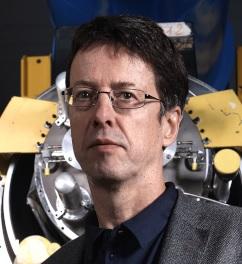The first Chamonix workshop, dedicated to LEP performance, took place in 1991 – we’ve come a long way since then!
For the first time since 2018, representatives from across the community headed to Chamonix for the traditional four-day LHC workshop. This is a technical workshop aimed at providing the opportunity to discuss plans, expectations and challenges for the upcoming years in an open and collaborative way. One session was dedicated to energy management and sustainability, and the workshop closed with a panel-led debate on future colliders. The event takes a lot of preparation, and it’s intense. Sessions go well into the evening and discussion continues unabated over coffee and the odd beer.
2022 saw the cross product of injectors, luminosity, availability, system performance and machine protection mapping onto a diverse physics programme, covering protons and ions, forward physics, luminosity calibration and the appearance of a diverse variety of new experiments exploiting the LHC’s potential for far forward physics. The year wasn’t without incident, but was ultimately successful: both injector and LHC performance bode well for Run 3. Nonetheless, two key strategic issues stand out…
Firstly, the inner triplet quadrupoles and associated corrector magnets situated on either side of ATLAS and CMS take a serious hit from luminosity debris coming from the interaction point. The associated radiation levels anticipated for Run 3 could eventually compromise their performance. The LHC Triplet Task Force has analysed the impact of radiation on equipment lifetime in the LHC inner triplet regions and proposed a number of mitigation measures, some of which will be deployed immediately to minimise the local integrated radiation dose. Additional measures and supporting activities are under study.
Secondly, electron cloud is an issue in the LHC and, when operating with high bunch currents, the associated heat load deposited on the beam screens in the main dipoles pushes the cryogenics system to the limits. Following the long shutdowns, the situation appears to be degrading locally in some sectors, and the effects have become a potential intensity limitation for the HL-LHC era. The complex surface chemistry involved appears to be understood, and a variety of mitigation measures are being considered.
Looking ahead to the challenges of Run 4, a baseline machine configuration has been defined, and the potential impact of electron cloud folded into performance expectations. Planned upgrades of key hardware systems, such as the full remote alignment system, machine protection, beam instrumentation, beam dumps, crab cavities and RF power systems, are advancing well. In 2022, the main dipoles operated well at 6.8 TeV after a long training campaign, and the hurdles to go to 7 TeV for Run 4 are well understood – the potential operational cost must still be carefully considered.
There has been sustained international effort and good progress on the HL-LHC magnet front. The production of the interaction region magnets is progressing well, and prototyping and production of the NbTi magnets have passed through critical phases. The INFN twin aperture D2 separation-recombination dipole prototype has been integrated in the cold mass at CERN and tested horizontal, while the D1 prototype has been tested vertical at KEK and is expected to arrive at CERN in March 2023 for the final horizontal test.
Good progress has also been made towards mastering the major challenges of the high-field Nb3Sn inner triplet quadrupoles (MQXF). Six out of the eight US-made MQXFA magnets have reached performance requirements. The first prototypes of the CERN-produced MQXFB exhibited performance limitations below nominal current, but a three-stage programme was put in place to address the root causes and the final prototype and first series magnet both reached the target current following the staged deployment of the first two phases of the programme.
The workshop also included a look forward to the huge amount of work to be done in preparation for and during LS3. The pre-LS3 period will include the production and testing of key HL components in SM18 and full-scale testing of interaction region magnets and associated systems at the inner triplet (IT) string. Besides the HL-LHC work, LS3 will see the implementation of major new CO2 cooling systems in ATLAS and CMS, and phase one of a major consolidation programme for the North Area. The overall coordination of the integrated programme will be a challenge, and detailed planning is already under way.
The sustainability session covered various topics related to energy management, emissions reduction and sustainability in the context of CERN’s present and future operations. These included exploring energy management options, reducing emissions from fluorinated gases, and sustainable accelerator development. Additionally, there were discussions on descoping options and helium usage, as well as follow-up on the recent CERN and Environment Workshop. These topics are relevant for both medium and long-term plans and highlight CERN’s ongoing efforts towards sustainability.
The workshop finished with an interesting Q&A session on the future options open to us after the LHC.
The next six years are going to keep us busy – ensuring the whole complex delivers a full and diverse physics programme, while securing the future out to the 2040s.
All the presentations may be found at: https://indico.cern.ch/event/1224987/
A workshop summary will be presented in the main auditorium on 15 March at 2.00 p.m.

